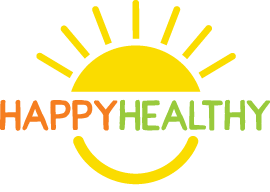HappyHealthy Fact Sheet: Backpack Food Programs

Helping Mississippians live happier, healthier lives!
Backpack food programs work to ensure children have food for meals between Friday lunch and Monday breakfast by providing food for children over breaks during the school year, such as weekends and longer holidays. Backpacks typically contain nonperishable, easy-to-cook foods.
You can help by donating items to your local food pantry, backpack program, or food bank. Help ensure children have healthy and easy-to-cook foods they need to eat on the weekends and longer holidays to avoid hunger when school meals are not available.
Each backpack food program is unique to the community and school(s) it serves. By providing children with healthy foods when they are away from school, they show up Monday morning ready to learn.
Consider This
- Providing children with healthy food is essential. Some children may not have an option for healthy foods available at home. Fruits, vegetables, and whole grains are important for growth and development.
- Items should be:
- Kid-friendly (no glass jars or large cans)
- Individually packaged
- Small and light enough for a child to carry
- Shelf-stable (refrigeration not required)
- Easy to cook (without a stove, can opener, or other equipment
- Nutrient-packed (fruits, vegetables, proteins, whole grains, and dairy products)
Amount for Suggested Food Groups:
- The following amounts are suggested for elementary school-aged children for two days.
- 1½ cups fruits
- 2 cups vegetables
- 4 ounces protein
- 5 ounces grains
- 3 cups dairy
Contact your local food bank or school to determine backpack food programs available.
Foods to Include
Fruit (choose 1½)
1 cup (8 ounces) of fruit =
- Small apple (2½-inch diameter)
- Large orange (3-inch diameter)
- ½ cup dried fruit (raisins, dried plums, dried cranberries, dried apricots)
- 1 cup canned fruit (in light syrup or 100% juice)
- 1 cup applesauce
Vegetables (choose 2)
1 cup (8 ounces) of vegetables =
- 1 cup tomato sauce or diced tomatoes
- 2 cups vegetable soup
- 1 cup canned vegetables (peas, corn, green beans, carrots, mixed vegetables)
Protein (choose 4)
1 ounce of protein =
- 1 ounce canned salmon, tuna, or chicken
- ¼ cup canned beans (baked beans, black beans, kidney beans, pinto beans, navy beans, chickpeas)
- ½ cup bean soup
- 1 cup low-sodium chicken or beef broth
- 1 tablespoon peanut butter
Grains (choose 5; 2 should be breakfast grains) 1 ounce of grains =
- 5 whole-grain crackers
- 1 packet plain oatmeal (1 ounce dry)
- 1 packet grits (1 ounce dry)
- 1 ounce pretzels
- 1 cup whole grain cereal or 1 individual serving box
- 2 cups popcorn
Dairy (choose 2–3)
1 cup of dairy =
- 1 cup shelf-stable milk
- 1 cup fortified soy beverage
@HAPPYHEALTHYMS on Twitter (X)
This material was funded by USDA's Supplemental Nutrition Assistance Program - SNAP. This institution is an equal opportunity provider.
Publication 3614 (POD-09-24)
By Dottie Kenda, Mississippi State University Extension Service.
The Mississippi State University Extension Service is working to ensure all web content is accessible to all users. If you need assistance accessing any of our content, please email the webteam or call 662-325-2262.







